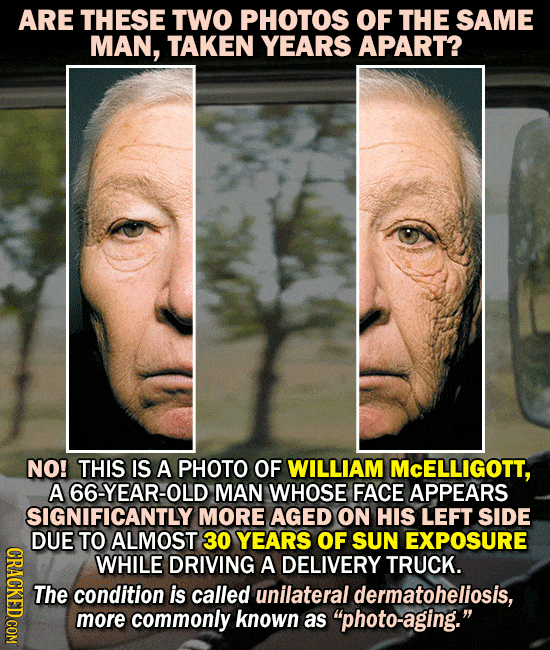
Repeated solar injuries over many years ultimately can result in the development of a skin syndrome, dermatoheliosis. Dermatoheliosis (DHe) results from excessive and/or prolonged exposure of the skin to ultraviolet radiation (UVR) in persons with SPT I to III and in persons with SPT IV who have heavy exposure to sunlight, such as lifeguards and outdoor workers. The syndrome results from the cumulative effects of sun exposure after the first exposures in early life. DHe describes a polymorphic response of various components of the skin (especially cells in the epidermis, the vascular system, and the dermal connective tissue) to prolonged and/or excessive sun exposure. As stated previously, the severity of DHe depends principally on the duration and intensity of sun exposure and on the indigenous (constitutive) skin color and the capacity to tan (facultative melanin pigmentation).
Causes of Dermatoheliosis
While UVB is the most obvious damaging UVR, UVA in high doses can produce connective tissue changes in mice. In addition, visible (400 to 700 nm) and infrared (1000 to 1,000,000 nm) radiations have been implicated. The action spectrum for DHe is not known for certain; there is some experimental evidence in mice that infrared radiation is implicated, in addition to UVB and UVA.
Symptoms of Dermatoheliosis
The most obvious symptoms of photo aging are:
- dark age spots on the face and decollete
- uneven complexion
- leathery skin
- fine lines
- a gradual thickening of the skin
- deep wrinkles around the eyes
Treatment
Topical Treatment Tretinoin in lotions, gels, and creams in varying concentrations has been demonstrated in controlled studies to effect a reversal (clinical and histologic) of some aspects of DHe, especially the connective tissue and vascular changes. There is a current notion that topical tretinoin can alter the progression of incipient epithelial skin cancers. 5-Fluorouracil in lotions and creams is highly effective in causing a disappearance of solar keratoses.
Prevention
Persons of SPT I and II should be identified early in life and advised that they are susceptible to the development of DHe and skin cancers, including melanoma. These persons should never sunbathe and should, from an early age, adopt a daily program of self-protection using sunfiltering clothing and substantive and effective topical sun-protective solutions, gels, or lotions that can filter DNA-damaging UVB; UVA filters are less effective. SPT I and II persons should avoid the peak hours of UVB intensity, which are the 2 h before and after solar noon (1200 GMT).
Caution: There is experimental evidence that while sunscreens protect from sunburn, they do not protect from UV-induced local immunosuppression. Prevention of sunburn may lure individuals into exposing themselves to the sun for prolonged periods, which may abrogate immunosurveillance mechanisms in the skin. This has been linked to the rising incidence of melanoma.
References